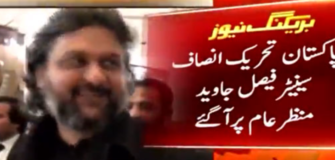“The total public debt of Pakistan is growing unmanageable”

The entire governmental debt and liabilities of Pakistan are starting to become unmanageable. Since 2011, the nation’s domestic debt has climbed six times while its external debt has doubled.
“The debt crisis facing Pakistan is a significant, existential, and pressing issue that calls for quick and calculated responses. Debt repayments are at an all-time high, making it less important to address pressing issues facing an expanding population, like social safety, health, education, and most critically, climate change.
This was mentioned in a thorough report published here on Sunday by the think tank Tabadlab. The depth and scope of the issue, the amount of money that is absent, and the course forward—with or without radical structural changes—are all made clear in Tabadlab’s groundbreaking analysis, “A Raging Fire.”
Through an analysis of significant financial metrics, a comparison with international norms, and the presentation of many scenario forecasts, “A Raging Fire” provides an essential road map for resolving Pakistan’s debt crisis.
The analysis concludes with the critical reforms required to free Pakistan from this never-ending financial cycle and set it on the route to economic recovery, which will ultimately lead to prosperity. Detailed solutions are provided in a dedicated section.
Nominally speaking, Pakistan’s internal debt has climbed six times since 2011 while the country’s external debt has nearly doubled. An estimated $49.5 billion in debt maturities, of which 30% is interest and none is from bilateral or IMF loans, will need to be repaid by Pakistan by FY-2024. Debt accumulation has largely been employed to maintain an economy that is import-dependent and consumption-oriented without making investments in industry or productive sectors. Pakistan’s borrowing and spending patterns are unsustainable, and the country’s debt profile is concerning. More funding is needed for social protection, health, education, and disaster preparedness connected to climate change, as well as adaption plans and the green transition, due to the expanding demands of a growing population. More funding is needed for social protection, health, education, and disaster preparedness connected to climate change, as well as adaption plans and the green transition, due to the expanding demands of a growing population. Pakistan’s climate and debt vulnerability compound each other, yet there is a chance to work together and simultaneously alleviate both existential crises.
Pakistan’s boom-bust cycles are ending quickly, making it impossible to have extended periods of stable growth (driven more by consumer spending than by industrialization or the expansion of the productive sector). Sustained Current Account Deficit: Pakistan has always had a smaller foreign exchange inflow than outflow because of this. It is unable to limit imports, boost the export sector, or raise remittances in order to prevent growth and industry expansion from being adversely impacted.
The main outcome of this is borrowing from outside. Annual Fiscal Shortfall Pakistan’s domestic economy has been unable to balance its receipts and outlays, leaving the state coffers short. As a result, borrowing becomes primarily domestic, which has the additional drawback of distancing the private sector. All of this suggests that Pakistan must borrow money to cover the majority of its expenses, including measures to combat climate change and build resilience.
Pakistan’s required debt load is increasing more quickly than the country’s GDP (gross domestic product). This indicates that there are limits on the economy’s potential to expand or boost output.
This cannot continue. It requires radical adjustment. Pakistan will continue to deteriorate and will eventually fail, which would be the beginning of the downward spiral, unless there are broad reforms and significant adjustments to the current state of affairs.
Pakistan’s debt profile will unavoidably worsen due to climate needs unless climate swaps are used to lessen both issues.

I am a dedicated student currently in my seventh semester, pursuing a degree in International Relations. Alongside my academic pursuits, I am actively engaged in the professional field as a content writer at the Rangeinn website.








